Seville’s flamenco scene is one of Spain’s most enigmatic, with flamenco theatres and bars lining both sides of the Guadalquivir River. Considered to be one of the important points of origin for the art-form, watching a flamenco performance in Seville is about as authentic as it gets, often becoming a trip highlight.
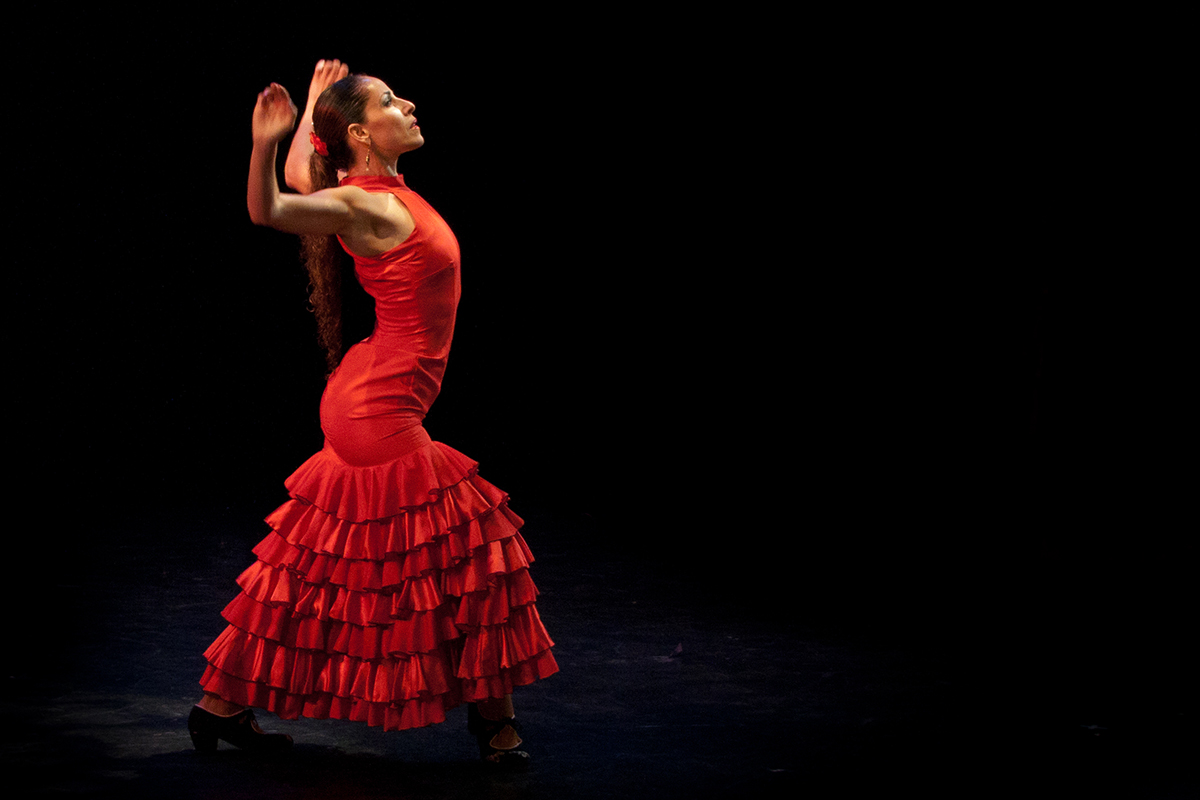
Modern flamenco dancer (Photo: Flavio~ via Flickr / CC BY 2.0)
Throughout the Andalusia region in southern Spain, you are likely to encounter one of the country’s most iconic traditions: Flamenco. The word alone conjures up visions of moody rhythms suffused with impassioned vocals as dancers in beautiful, flowing red and black costumes carouse across wooden floorboards with elegant movements that range from the emphatic to the serpentine.
Its origins steeped in mystery, but most strongly linked to Seville, flamenco has only been recorded as a cultural entity for a couple of centuries. However, it is widely accepted that its origins reach back much further into the past. Some say it comes from India, by way of the Romani, others that it cannot possibly be separated from Andalusia, emerging as the organic product of cultural exchange through generations under the Spanish sun.
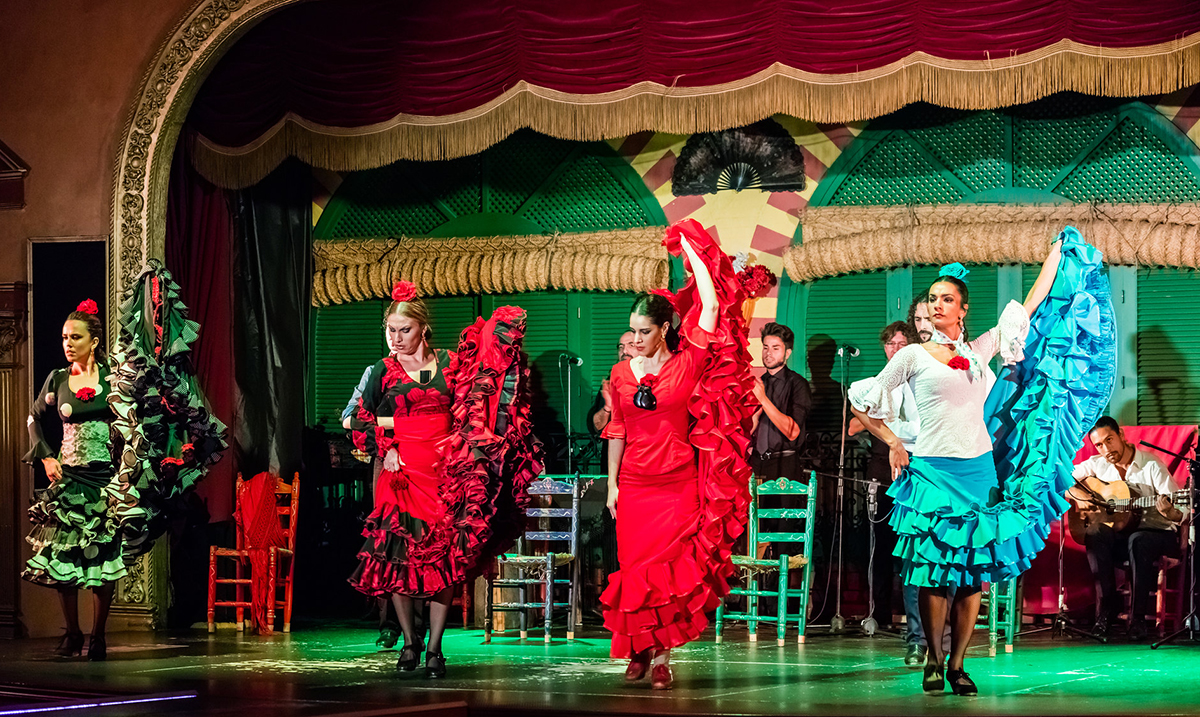
Full flourish at El Palacio Andaluz (Photo: Diego Delso via Flickr / CC BY-SA 2.0)
The Basics of Flamenco
One of the most striking things about flamenco, when comparing it with other forms of dance and music, is its diversity. Adding fuel to the theory that flamenco is constantly evolving, there are now thought to be over 50 different flamenco styles, giving the form a creative fluidity. Each style is known as a palo, with defining characteristics including place of origin, rhythm and even whether they should be danced by women only, men only or both; although the latter consideration is becoming increasingly fluid.
This diversity owes much to the varied forms of expression that contribute to the art-form of flamenco. These include the core forms: baile (dance), cante (song) and toque (guitar). Added to these, which can already manifest themselves in myriad ways, there are other forms of expression through instruments like castanets, percussion and tambourines, palmas (hand clapping), which is further enhanced by the tap dance-like footwork of the dancers, pitos (finger clicking), and vocalisations of the singers known as jaleo, although this last term can also be used to encompass the foot stomping and hand clapping.
To give a sense of how these elements each adds nuance, it’s worth noting that even the clapping can be split into additional categories, depending on which parts of the hand are used to clap, and the position of each hand as they’re clasped together. Add in the rhythm and amplitude of the claps and palmas alone can be quite a diverse form of expression. Now imagine this over the animated movements and facial expressions of the dancers, the complex, finger-picked rhythms of the guitar, and various other factors, and you begin to see just part of the art-form’s enduring appeal and creativity.
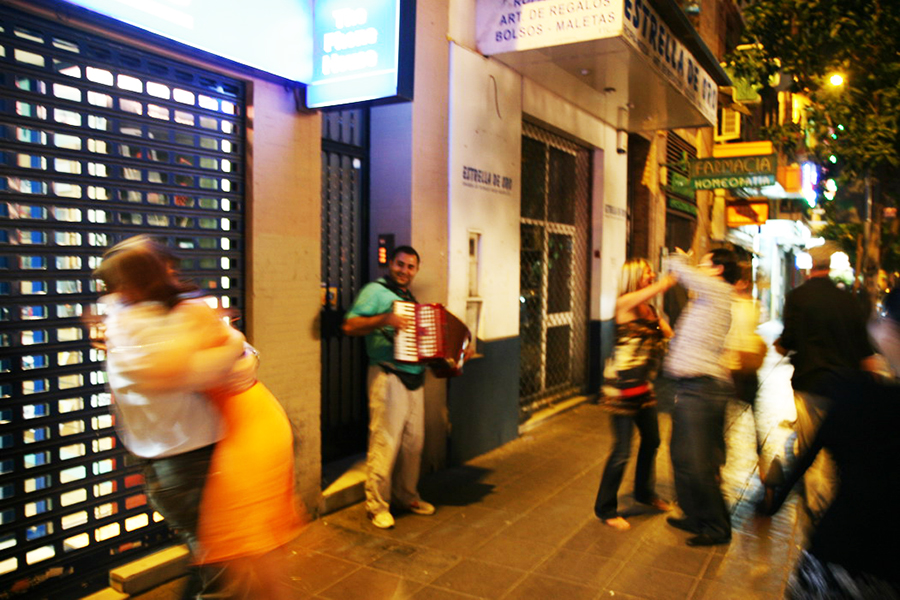
Flamenco in the streets in Seville’s Triana district (Photo: Glen MacLarty via Flickr / CC BY 2.0)
A Veiled History
Although the exact place and moment when flamenco came into being are impossible to define, it is highly likely that the art-form has evolved much through the centuries. Indeed, it continues to do so even today. If you decide to visit a tablao or flamenco theatre in Seville, what you will hear is likely to be authentically Andalusian though.
Flamenco is rooted in the area’s folklore, but intriguingly, Andalusian customs have developed with the input of a diverse array of cultures, the most notable of which are undoubtedly Catholic Spain, and the Islamic Moors. Over the years, others like the Sephardi Jews and Romani groups filtering into the region added their own sensibilities.
It is thought that the latter group, known as the Gitanos, or Gypsies of Spain, fomented the style as it is known today, which would explain the absence of written records about flamenco before the 18th century. If the great Spanish writer Federico García Lorca is to be believed though, something resembling modern flamenco undoubtedly existed in Andalusia around the cities of Cordoba, Huelva and Seville long before the Romani arrived in the region from western India, beginning in the 9th century.
Now out in the world, from Japan to Cuba, and across the whole of Spain, each region is contributing its own creative sensibilities to flamenco, so that it continues to evolve. One rumour has it that the art-form is so popular in Japan currently, that there are more flamenco schools in Japan than in Spain.
Must-Visit Flamenco Theatres
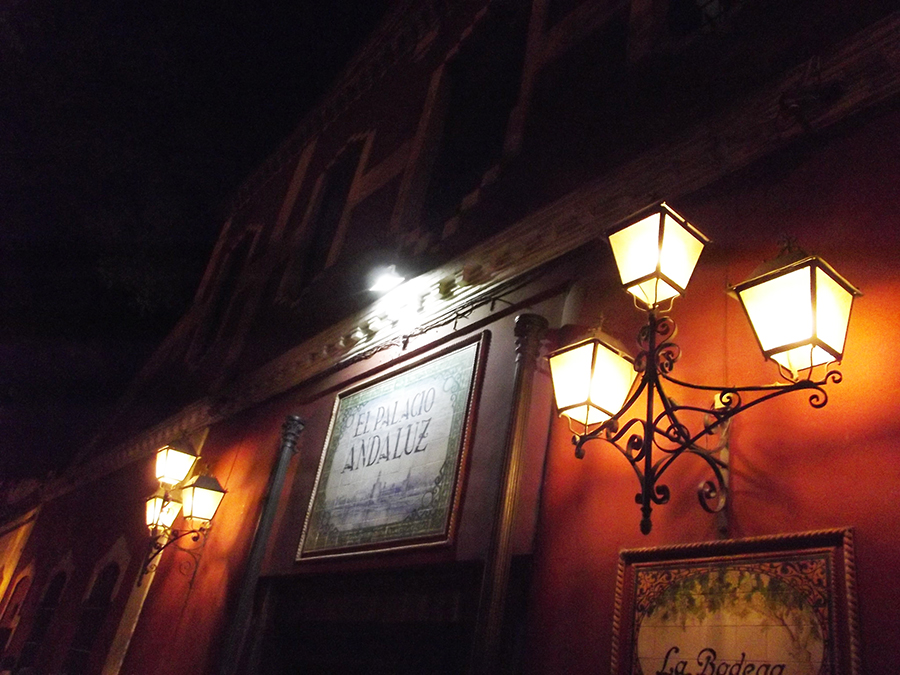
El Palacio Andaluz at night (Photo: Elliott Brown via Flickr / CC BY-SA 2.0)
Seville is strongly linked with the golden age of flamenco of the 19th century, with local legend Silverio Franconetti Aguila one of the city’s most legendary singers. He founded Café Sin Nombre (which no longer exists) in the city, forming what would become a traditional type of performance venue known as a café cantante. These have since been replaced by the tablao, or flamenco, theatres that are common across Seville and further afield today. Here are some of the best.
El Palacio Andaluz (Calle María Auxiliadora, 18A) is one of Seville’s most popular venues for flamenco. The large stage, complete with a proscenium arch, lends itself to larger spectacles than some of the other venues on this list. Expect multiple dancers and musicians bringing the hall alive. Performances are accompanied by eating and drinking, with tickets available ranging from those that include only a drink, right up to a full a la carte meal served with wine as the entertainment unfolds on stage.
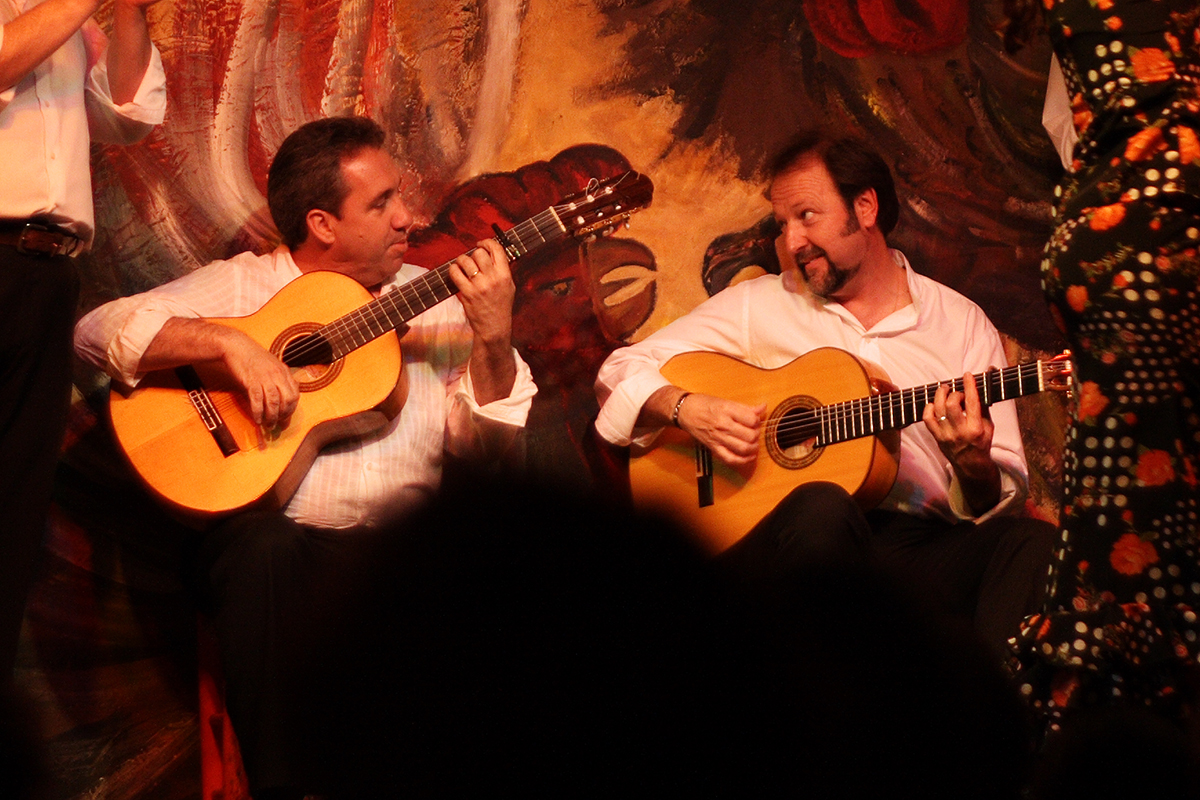
Guitarists interact at Tablao Los Gallos (Photo: andy cheung via Flickr / CC BY-NC-ND 2.0)
Tablao Los Gallos (Pl. de Sta. Cruz, 11) is a neat little venue with wrought iron grill windows, rows of seating like a theatre but with shared tables for drinks, and a small bar at the back of the room. Tickets are pricier than some of the venues but include the price of a drink and include a show that typically lasts around 90 minutes. At least ten performers are included in the events, bringing variety and showcasing some of the breadth of the art-form in terms of style and emotion.
For a little more in-depth information about the musical side of flamenco, Casa de la Guitarra (Calle Mesón del Moro, 12) combines a flamenco theatre with historic exhibits inside its guitar museum. Especially for those interested in music, this spot has one of the finest collections of historic and traditional handmade flamenco guitars in the world, from many of the eminent artisans. Although home to one of the smaller stages on this list, with quite a cosy seating arrangement, unsurprisingly, the quality of the guitar in performances at this small venue is impeccable.
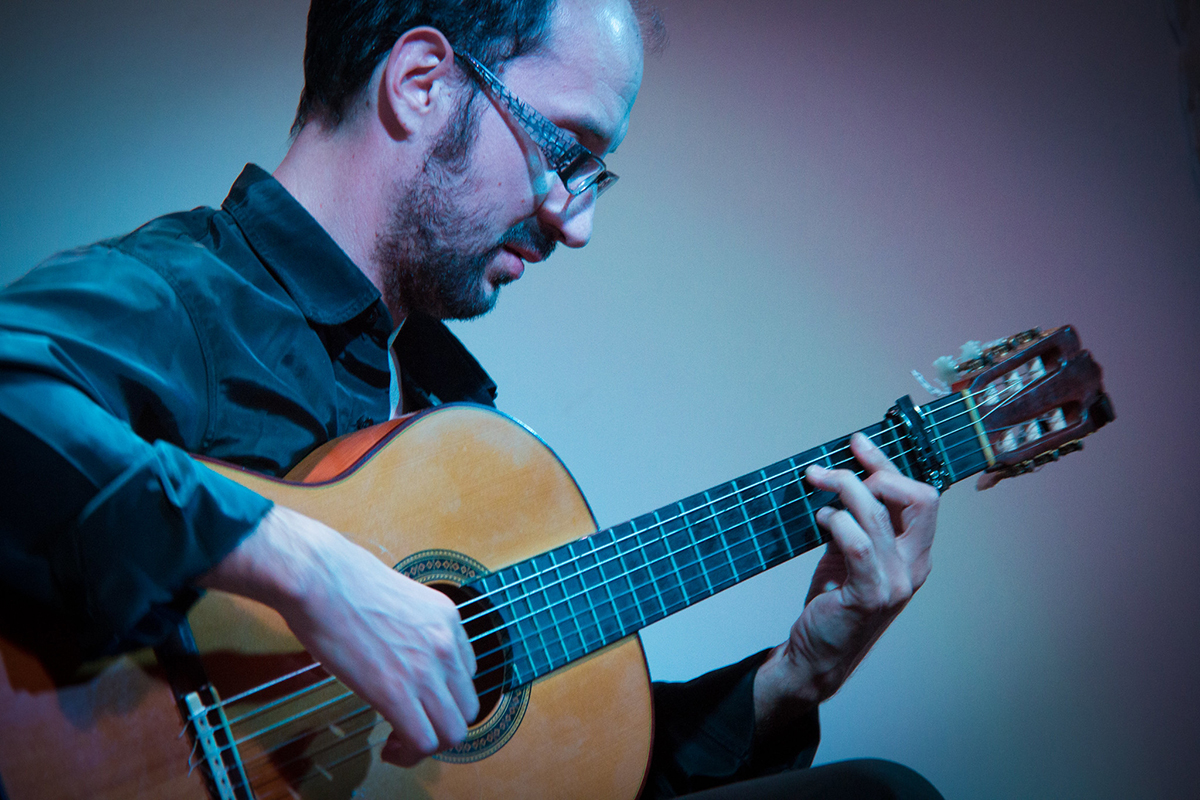
Performer at Casa de la Guitarra (Photo: Tibor Kovacs via Flickr / CC BY 2.0)
With at least one, and occasionally numerous, performances daily, particularly throughout the summer, La Casa del Flamenco (Calle Ximénez de Enciso, 28) seems well deserving of its name. The venue is especially revered for the quality of the dancing on show, but plaudits are readily forthcoming for every aspect of the performances here. The stage is set against a backdrop of green, white and red tiles, while the seating is under arches that give the setting both a refined and an intimate feel. Part of that comes from the fact that it’s set in the former home of a wealthy family, dating back to the 15th century.
Casa de la Memoria (Calle Cuna, 6) is another excellent venue that is steeped in cultural history. The former family house sits right on the cobbled streets with performances taking place in a courtyard, with seating both at stage level and looking down from a wooden balcony. Give yourself time before the performance to have a look around the small museum that forms part of this cultural centre, with some lovely old posters for flamenco events of decades gone by. Performances take place nightly.
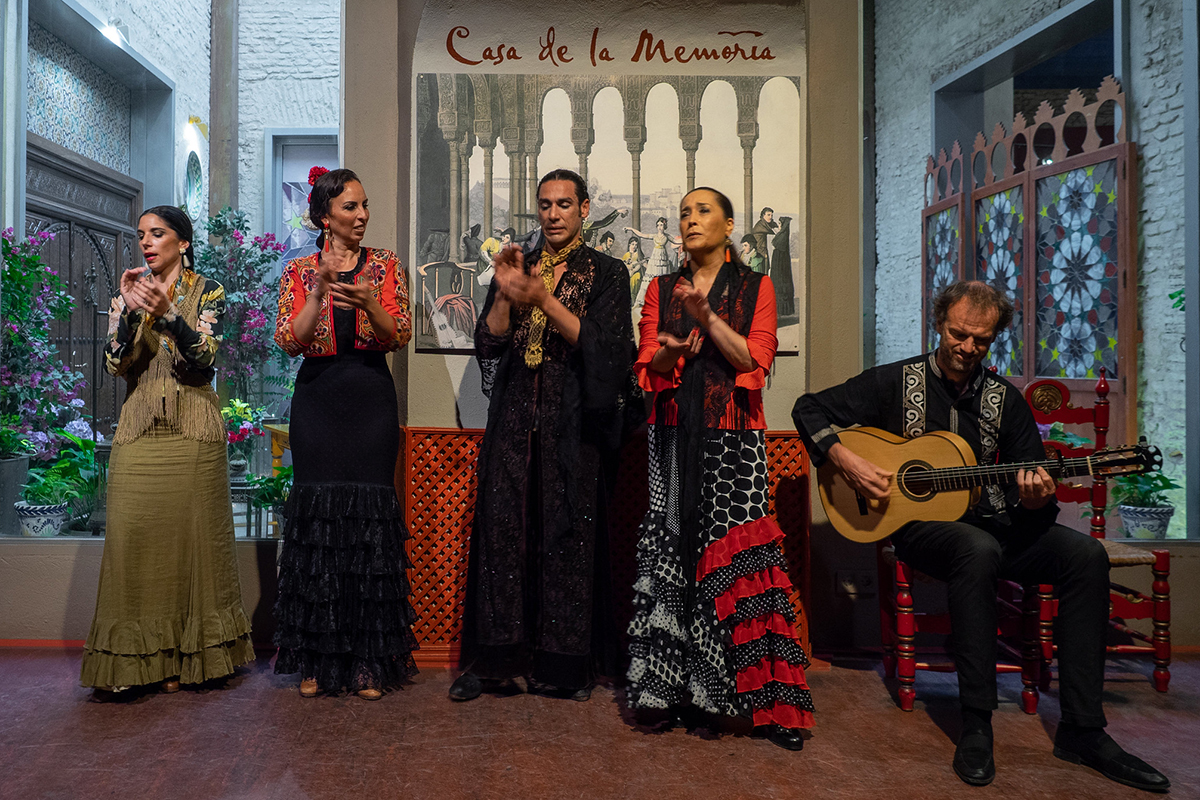
Performers at Casa de la Memoria (Photo: Ajay Suresh via Flickr / CC BY 2.0)
Situated close to the river, cathedral and bull ring is Tablao El Arenal (Calle Rodo, 7), another great option for those who like to combine dinner and a flamenco performance while in Seville. El Arenal’s core aim is to pair two distinctly Andalusian cultural aspects together, namely the flamenco performance and the local cuisine. This is certainly one of the better places to get a meal while watching a show in the city. Alternatively, you can opt for the drink and show ticket, with the quality of the performance all but guaranteed owing to the venue’s forty years of expertise in the heart of Spain’s flamenco capital.
As more of a bar than a flamenco venue, Pura Esencia (Calle Betis, 56) is a tablao with a very laid-back, open feel to it. This style is much more common to Triana, a bohemian region of Seville that sees far less tourism than its fellow districts across the river. This has a dual effect: the performances tend to be more authentic, but don’t always attract the most skilled flamenco practitioners. The venue is open from 7–10pm each evening, and like every spot on this list, it’s highly advisable that tickets are purchased in advance.
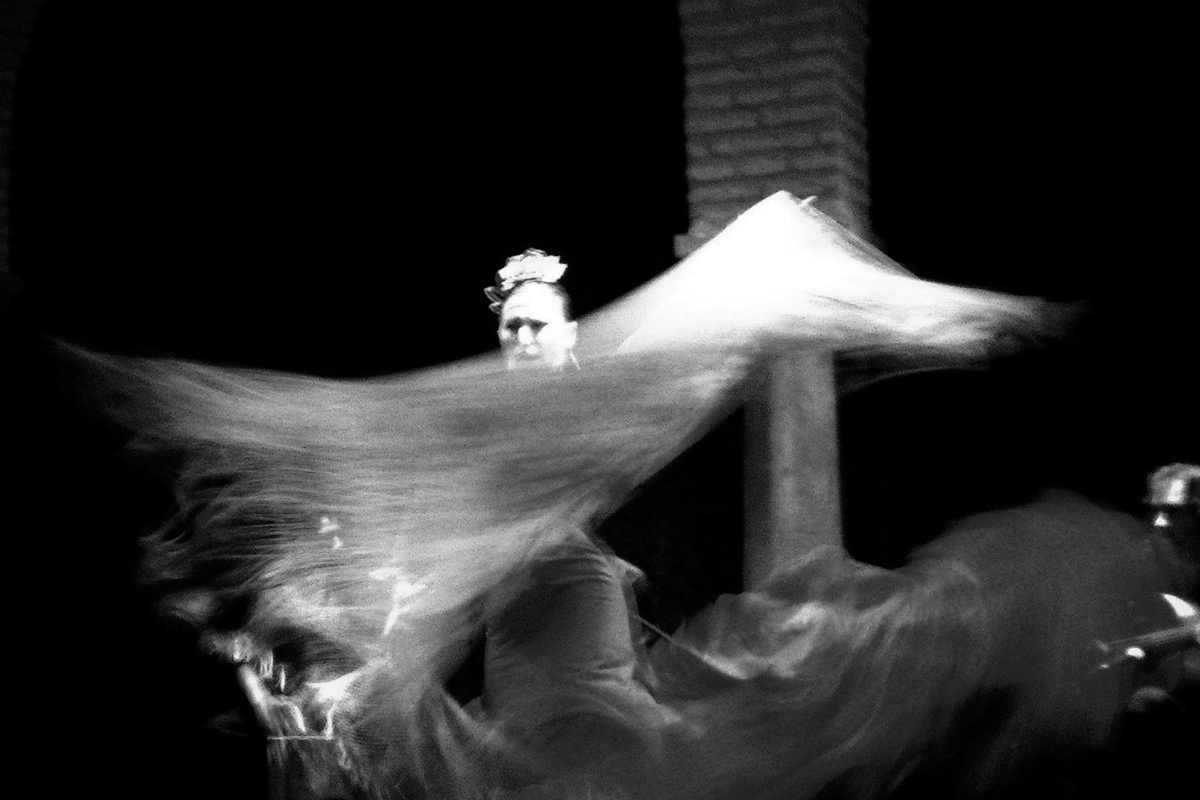
Performer at Museo del Baile Flamenco (Photo: Antonio Foncubierta via Flickr / CC BY-SA 2.0)
Another key component of flamenco, dance, is represented in Seville at the Museo del Baile Flamenco (Calle Manuel Rojas Marcos, 3), or the Flamenco Dance Museum. A great one to couple with a trip to the Casa de la Guitarra, or to simply choose instead if dance is more your thing, this is a heritage museum first and performance venue second. See costumes and learn about the evolution of flamenco via permanent interactive, and temporary, exhibitions, then watch the real thing unfold in front of you on stage. Performances are notable especially for the dancing, and there’s a shop here selling flamenco dresses and souvenirs.
Another great spot over on the opposite side of the Guadalquivir River in Triana, and one of the handful of flamenco theatres close to the riverbank, is Lola de los Reyes (Calle Pureza, 107). This might be the most authentic flamenco show in Seville, certainly in terms of the complete experience. The venue is open-plan, with seating arranged around the outside of the room, a bar at one end and the performance unfolding in and around you in a much more immersive way than many of the stage-based shows. There’s a spontaneity to the shows, with a regular set of talented performers and the occasional special guest bringing the show to life up-close.